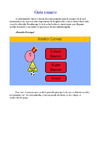Please use this identifier to cite or link to this item:
https://accedacris.ulpgc.es/jspui/handle/10553/12636
| DC Field | Value | Language |
|---|---|---|
| dc.contributor.advisor | Rodríguez Rodríguez, Abraham | - |
| dc.contributor.author | Hernández Romano, Domingo Guzmán | - |
| dc.contributor.other | Escuela de Ingeniería Informática | en_US |
| dc.date.accessioned | 2015-01-08T03:30:58Z | - |
| dc.date.accessioned | 2018-06-04T13:57:47Z | - |
| dc.date.available | 2015-01-08T03:30:58Z | - |
| dc.date.available | 2018-06-04T13:57:47Z | - |
| dc.date.issued | 2014 | en_US |
| dc.identifier.uri | https://accedacris.ulpgc.es/handle/10553/12636 | - |
| dc.description.abstract | Juego Stacker para HTML5 propone una aplicación web con dos modalidades de juegos basados en el clásico Stacker. La modalidad classic stacker pretende simular dicho juego, en la cual el jugador ha de apilar una fila horizontal de cuadrados que se desplazan a velocidad constante horizontalmente sobre otra fila horizontal de cuadrados que se encuentran en la parte inferior sin describir ningún movimiento. La velocidad de movimiento de la fila que ha de apilar irá aumentando conforme se vayan superando los niveles. El juego acaba cuando no dispone de más cuadrados en la fila, que se perderán si no se consigue apilar de manera exacta. La otra modalidad de juego se le conoce como super stacker. En esta modalidad, el jugador ha de apilar una serie de figuras con formas distintas sobre otras figuras estáticas que forman parte de un mundo generado. Las figuras que ha de apilar el jugador son sensibles a fuerzas tales como la gravedad, colisión entre objetos, fricción, etc. Si alguna de estas figuras entra en contacto con alguno de los límites del mundo, el jugador ha perdido. Ganará cuando la estructura final formada aguanta un número de segundos determinados, pasando así a otro nivel (escenario) de mayor complejidad. Para esta modalidad de juego se ha necesitado un motor físico portado a Javascript que simule las fuerzas mencionadas anteriormente. Resaltar también que se ha optado por realizar un diseño adaptable utilizando frameworks como bootstrap 3 debido al gran auge de los dispositivos móviles con dimensiones de pantalla variables. | en_US |
| dc.description.abstract | Stacker Game HTML5 web application proposes two methods based on classical Stacker game. Classic mode is intended to simulate the stacker game in which the player has to stack a horizontal row of squares which move horizontally at constant speed on a horizontal row of squares that are at the bottom without describing any movement. The speed of movement of the row that has stacking will increase as they go through the levels. The game ends when no more squares in the row, which will be lost if you do not get exactly stacked. The other game mode is called super stacker . In this mode, the player has to stack a series of figures with different shapes on other static part of a world generated forms . Figures that the player has to stack are sensitive to forces such as gravity , collision between objects , friction , etc. If any of these figures comes in contact with any of the limits of the world , the player has lost. You win when the final structure formed hold on a certain number of seconds , so going to another level ( stage ) of greater complexity. For this type of game it has taken a physics engine ported to Javascript to simulate the forces mentioned above. Also note that it has been chosen to perform an adaptable design using frameworks like bootstrap 3 because of the boom of mobile devices with varying screen sizes. | en_US |
| dc.format | application/pdf | es |
| dc.language | spa | en_US |
| dc.rights | by-nc-nd | es |
| dc.subject | 120317 Informática | en_US |
| dc.subject.other | Juego | en_US |
| dc.subject.other | Stacker | en_US |
| dc.subject.other | HTML5 | en_US |
| dc.subject.other | Canvas | en_US |
| dc.subject.other | Web | en_US |
| dc.subject.other | Android | en_US |
| dc.title | Desarrollo del juego Stacker para HTML5/Canvas | en_US |
| dc.type | info:eu-repo/semantics/bachelorThesis | en_US |
| dc.type | BachelorThesis | en_US |
| dc.compliance.driver | 1 | es |
| dc.contributor.departamento | Departamento de Informática y Sistemas | en_US |
| dc.contributor.facultad | Escuela de Ingeniería Informática | en_US |
| dc.identifier.absysnet | 704801 | es |
| dc.investigacion | Ingeniería y Arquitectura | en_US |
| dc.rights.accessrights | info:eu-repo/semantics/openAccess | es |
| dc.type2 | Trabajo final de grado | en_US |
| dc.utils.revision | Sí | en_US |
| dc.identifier.matricula | TFT-33590 | es |
| dc.identifier.ulpgc | Sí | en_US |
| dc.contributor.buulpgc | BU-INF | en_US |
| dc.contributor.titulacion | Grado en Ingeniería Informática | es |
| item.fulltext | Con texto completo | - |
| item.grantfulltext | open | - |
| crisitem.advisor.dept | GIR IUCES: Computación inteligente, percepción y big data | - |
| crisitem.advisor.dept | IU de Cibernética, Empresa y Sociedad (IUCES) | - |
| Appears in Collections: | Trabajo final de grado | |
Show simple item record
Page view(s)
162
checked on Aug 10, 2024
Download(s)
723
checked on Aug 10, 2024
Google ScholarTM
Check
Share
Export metadata
Items in accedaCRIS are protected by copyright, with all rights reserved, unless otherwise indicated.

